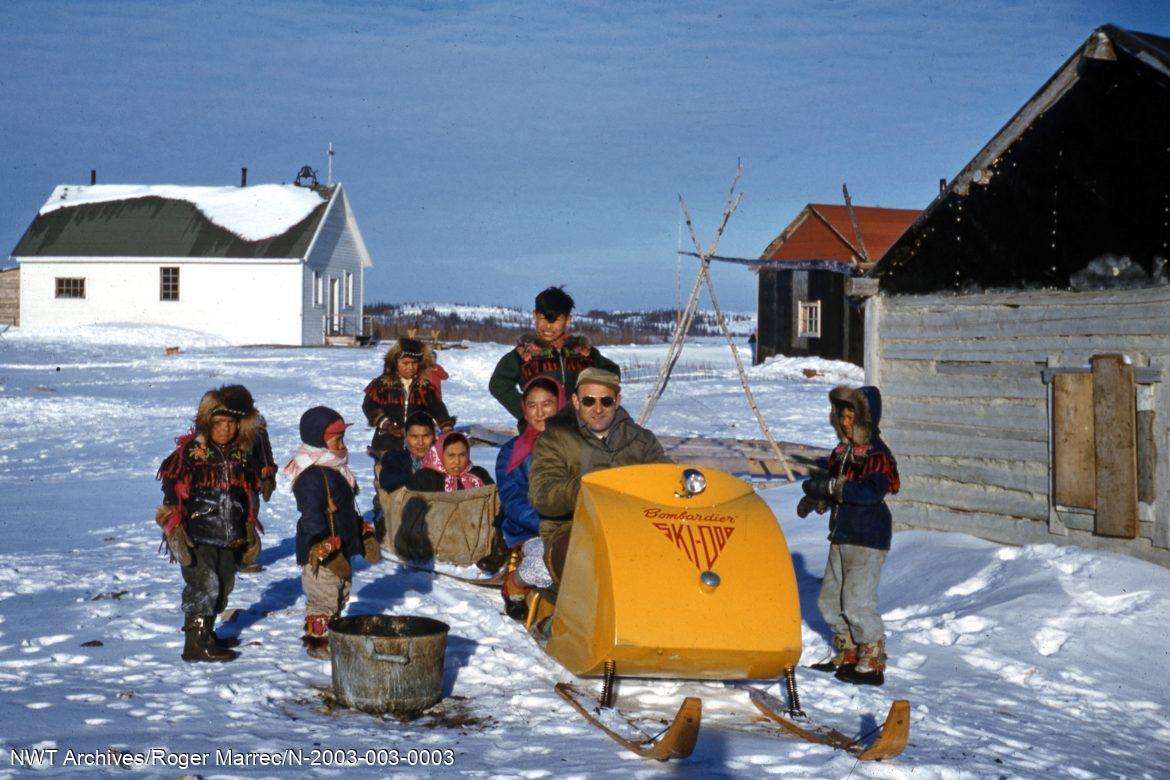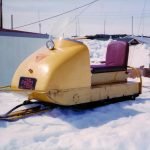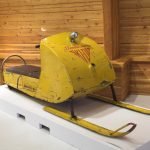1959
From Sled Dogs to Snowmobiles
Joseph-Armand Bombardier received his first patent for a tracked vehicle designed to travel over snow in 1937. This was the “B7,” a multi-passenger vehicle built at the l’Auto-Neige Bombardie Limitée factory in Valcourt, Québec. Though these large snow machines were the mainstay of his company, Bombardier’s dream was to eventually produce a smaller, lighter version that he hoped would replace the dog team as the principle means of winter transport in rural Canada.
In 1959 the Ski-Dog snowmobile, the first mass-produced, lightweight snow machine, went on sale. After years of development, testing and redesign, the final products were instantly successful. A typographical error in the promotional brochure of these snowmobiles turned the Ski-Dog into the Ski-Doo, and the name stuck.
Mechanization in the Northwest Territories significantly impacted traditional hunting, trapping and employment needs. Purchasing a snowmobile required cash, as did the gas and maintenance. Suddenly traditional dog teams, with the necessary care and feeding, were exchanged for faster-moving vehicles. Isolated hunting grounds were now accessible only if the hunter had money. The NWT started to shift to a wage economy, and many traditional practices were altered.
The introduction of the Bombardier Ski-Doo, along with other brands of snowmobiles, revolutionized winter travel in the north. Snowmobiles replaced dog teams in many isolated northern communities and are now more common than cars or trucks. They serve a wide range of purposes, from hunting to grocery shopping.
Today, dog teams are more common for their role in winter sports than as part of a trapper’s tool kit. Yellowknife hosts the annual Canadian Championship Dog Derby, in which teams from around the world compete in a 50-mile race, and many other northern communities embrace the dog racing culture.






